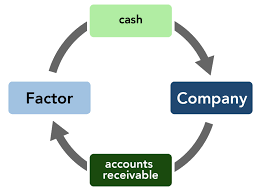A Complete Guide on Accounts Receivable Factoring
Accounts Receivable Factoring: How much does it Cost?
Professional payment conditions are limited. Legally, they are limited to 60 days from the date the invoice was issued. However, if these payment dates are missed, it may be more difficult to control your working capital requirements. You might then think about implementing accounts receivable factoring to suit your cash flow needs.
But what exactly is accounts receivable factoring?
What is Accounts Receivable Factoring?
Factoring is a short-term financing solution that helps companies quickly dispose of the sums related to their customer invoices without waiting for payment deadlines. This mechanism thus enables professionals to avoid cash mismatches
This method has a cost, which is generally significant. The system essentially compensates the factoring company known as “factor” with two commissions and sometimes some extra expenses. These are the factoring management commission and the finance commission.
How Does Accounts Receivable Factoring Work?
The concept exists in different forms but remains identical at the base and in a broad outline. The lending partner, referred to as the “factor,” purchases unpaid commercial invoices from companies and provides them with cash at a discount. The lending partner then collects the funds from the client on their behalf and transfers the remaining balance to the company, minus applicable fees. However, the value of the unpaid invoices depends on the factor chosen by the company.
What are the Benefits of Accounts Receivable Factoring?
The benefits of factoring are obvious, especially in tough economic times. Instead of waiting for payment of the invoice when due, you are paid immediately by the factoring company. The invoices are transformed into cash invoices. The main advantages of this system are, therefore:
- Free yourself from collection problems
- To have cash without waiting
- Preserve or rebuild your cash flow
- To be able to invest again
- Pay your suppliers faster
Factoring allows you to concentrate on professional activities and relieves you of the administrative hassle related to the management of debtors, the recovery of unpaid bills, etc. However, if we consider the cost of this, it is advisable not to use it. In many cases, you can also choose to continue managing your credit yourself.
Types of Accounts Receivable Factoring
Accounts receivable factoring falls into the following broad categories:
Recourse & Non-Recourse Factoring
When a company chooses recourse factoring, it agrees to pay an additional cost if the invoices are not paid on time. Contrarily, using non-recourse factoring, the company is not liable for unpaid invoices. The cost of non-recourse factoring is higher.
Notification & Non-Notification
In a notification deal, the factoring company would notify the borrower’s buyer of the transaction, which would cause the company’s payable team to be contacted with updated payment instructions. The buyer is fully uninformed of the vendor’s financing arrangement with the factoring company in a non-notification deal.
Spot & Regular
A spot deal involves a single transaction between the vendor and the factoring company. Depending on newly issued invoices in regular factoring, the company will likely have an approved limit that can be repaid, drawn, and redrawn again.
How Much Does Accounts Receivable Factoring Cost?
The following are the typical costs associated with accounts receivable factoring
- For accounts receivable finance, a factoring fee of between 1% and 5% is to be incurred. The actual rate, however, might be determined by a number of variables. These variables include invoice volume, the caliber of customers, the industry risk, and the particulars of the contract.
- In addition to an initial brokerage fee of up to 5%, some factoring agencies may impose a one-time setup fee to open your factoring account. This amount might range from 500 to 2,500 dollars.
- The billing procedure has an impact on the factoring fee as well. The majority of factoring financing adheres to non-progress billing. Standard invoicing and cash payments for time and materials or commodities and services are all included. Progress billing, which often has a higher factoring cost, is used for ongoing invoices that are paid in installments, like a construction project.
- Making the decision between recourse and non-recourse business factoring is another factor. Because the factor takes on greater risk than recourse factoring, it also has tougher standards.
Which Companies Use Accounts Receivable Factoring?
Although smaller firms are more likely to employ accounts receivable factoring, it can be used by any type of business. It is, nevertheless, quite common in a smaller subset of particular industries, where:
- Collection times are too long or unpredictable, as in the case of independent trucking and logistics companies.
- Collections and disbursements are inconsistent, like in temporary staffing companies, where employees are paid biweekly by the agency, but its invoices may only be reimbursed by the employer once per month.
- Invoice settlement depends upon a third party in the value chain settling its invoice, like the construction sub-trades (plumbing, HVAC, framing, etc.), where trades people complete work today but are only paid by the general contractor once the project owner or the real estate developer settles its invoice.
Conclusion:
The use of accounts receivable factoring can be interesting if it is punctual or if you no longer have a choice. But working to put in place sound management of your accounts receivable will be much more beneficial and less costly for your company, in both the short and the long term.




